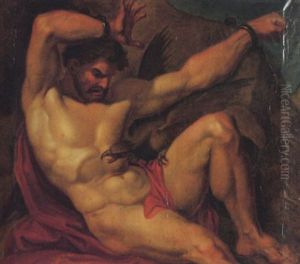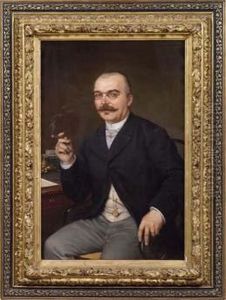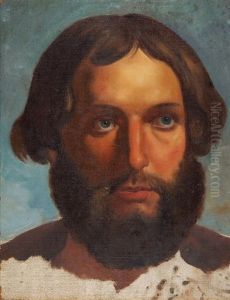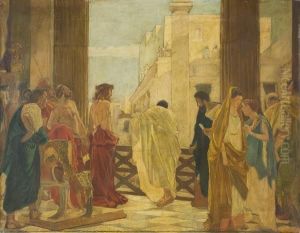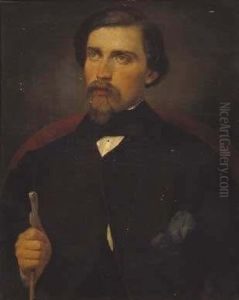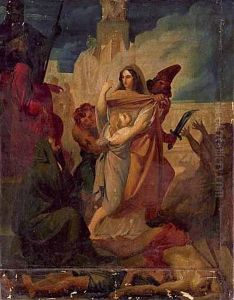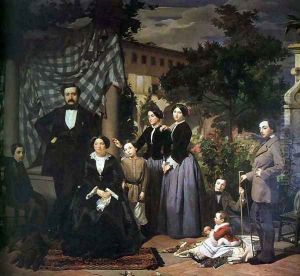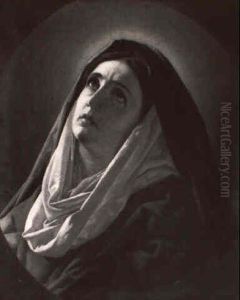Antonio Ciseri Paintings
Antonio Ciseri was an Italian painter of religious subjects, and an exponent of the late-Baroque and early Neoclassical style. He was born on October 25, 1821, in Ronco sopra Ascona, Switzerland, to Italian parents who soon relocated to Florence, Italy, where Ciseri would live and work for the majority of his life.
Ciseri received his formal art education at the Accademia di Belle Arti in Florence under the tutelage of Giuseppe Bezzuoli. His training was deeply rooted in the study of classical art and the works of the Renaissance masters, which greatly influenced his stylistic approach. While his early works nodded to the grandeur of Baroque, his mature style exhibited the balance and clarity associated with Neoclassicism.
Throughout his career, Ciseri was primarily known for his religious compositions, characterized by their dramatic intensity, refined use of light, and meticulous attention to detail. His works often conveyed deep emotional resonance and were marked by their realistic portrayal of biblical scenes. One of his most famous paintings is the monumental altarpiece 'Ecce Homo' (Behold the Man), finished in 1871, which depicts the moment of Pontius Pilate presenting a scourged Jesus Christ to the public before his crucifixion. This painting is a prime example of Ciseri's ability to blend dramatic narrative with technical precision.
In addition to his religious paintings, Ciseri also worked on historical subjects and was a sought-after portraitist. He was commissioned to create works for various churches and institutions across Italy, and his paintings are found in many prestigious collections. Beyond his painting, Ciseri also taught at the Accademia di Belle Arti, where he influenced the next generation of Italian artists.
Ciseri's reputation grew over his lifetime, and he became a respected figure in the Italian art community. His work was characterized by a sincere piety and a dedication to expressing religious sentiment in a way that was both accessible and artistically rigorous. Despite the shift towards more modern movements at the end of the 19th century, Ciseri's work retained a timeless quality that continues to be appreciated today.
Antonio Ciseri passed away on March 8, 1891, in Florence. His legacy is preserved through his significant contributions to religious and historical art, his influence on his students, and his masterful understanding of the human form and emotive storytelling through painting.






